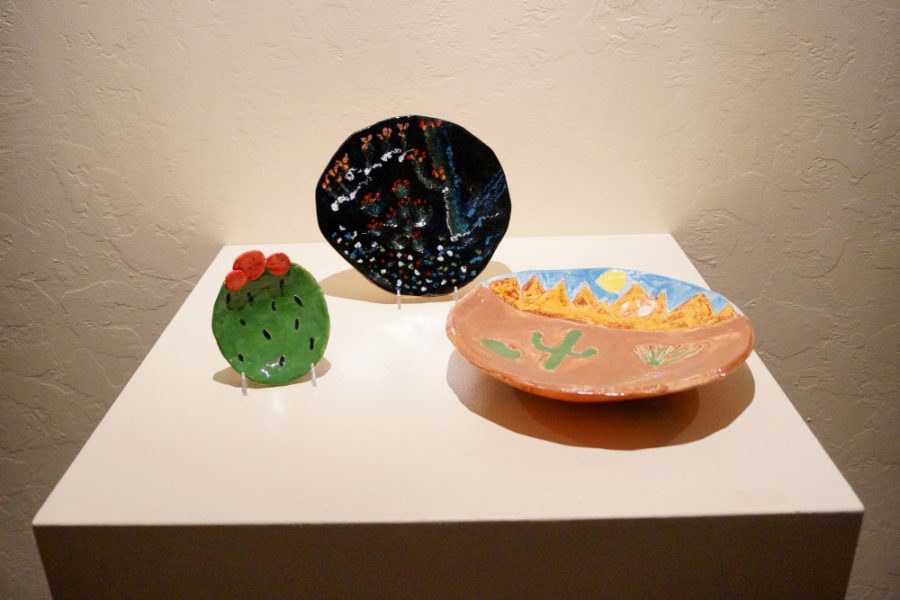At a time when food systems are increasingly clogged with processed and fattening foods, it may seem hard to eat healthy and locally.
Thankfully, a new art exhibit at the UA Student Union Memorial Gallery, titled “Plating the Desert,” aims to help students reconnect with the local foods in and around Tucson.
The exhibit officially opened March 8 and will run until March 25.
It was put on by the environmental arts committee within the UA Students for Sustainability. Funding for the project came through the UA Green Fund. To make the exhibit possible, Students for Sustainability partnered with Tucson Magnet High School, the Community Food Bank of Southern Arizona, the UA Community and School Garden, the UA community garden class and the UA Ceramics Class.
Hand-crafted pottery plates line the gallery, each representing the relationship between the desert environment and food. The plates were created by UA students in UA professor Aurore Chabot’s ceramics class and students from Tucson High Magnet School’s ceramics class taught by Jill Bennett.
“It ended up boiling down to working with one of Jill’s classes and one of Aurore’s classes to craft plates thinking about using the plate as a medium for ideas of what we should eat and what should go on our plate,” said Stephanie Choi, committee chair for the Environmental Arts Committee.
Along with the plates, the exhibit features illustrations, photographs, paintings and student work from classes within the UA community garden class. Collectively, the exhibit brings an arts and literary perspective to the environmental movement.
The elements of local food featured in the exhibit transcend the boundaries of both science and art. The culture and community associated with food ties in the project from an artistic standpoint.
“To paraphrase the folklorist Maribel Alvarez, food is more than just the food item you consume,”said Moses Thompson, community outreach coordinator for the College of Social and Behavioral Sciences. “Food carries with it a sense of place, colors, textures, stories and traditions.”
Meanwhile, the agriculture and soil behind foods ties them into science. Eating locally can decrease the amount of miles the food in the fridge travels to make it there. It can also mean lower emissions from trucks carrying the food.
“When you are growing local in community gardens, the soil is better and you are treating it better,” Choi said. “You can also control for water. …. A lot of the community gardens have their own cisterns and do their own rainwater collection.”
Nutrition is also tied into eating locally, especially in low-income communities.
“Local foods are typically unprocessed, healthy foods,” Thompson said. “All of the schools we work in have substantial numbers of kids who live at or below the poverty line and come from communities over-represented in diet-related illness. If the local food movement is about community transformation, local food has to be available to our community’s most vulnerable.”
Tucson is a recently recognized United Nations Educational, Scientific, and Cultural Organization World City of Gastronomy. “Plating the Desert” provides a way for students to reconnect to their local food systems in Tucson.
Follow Natalie Robbins on Twitter.









